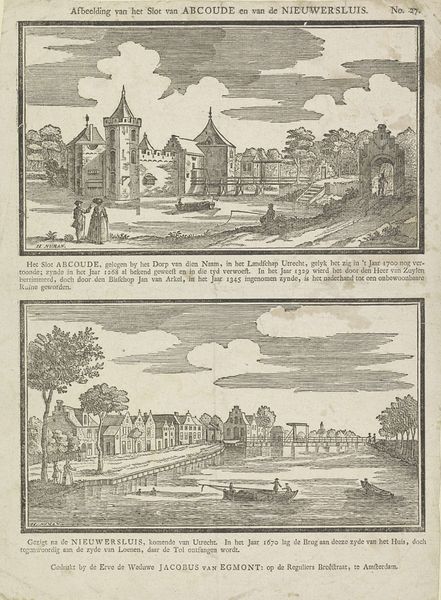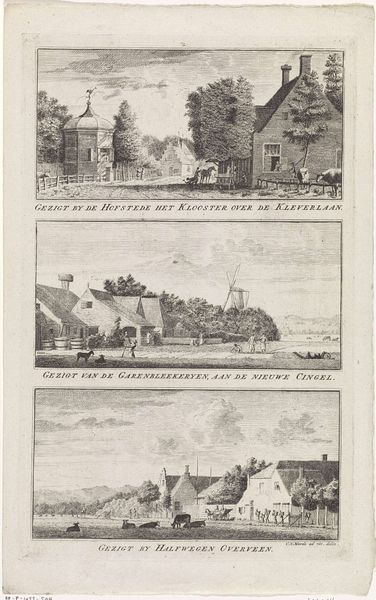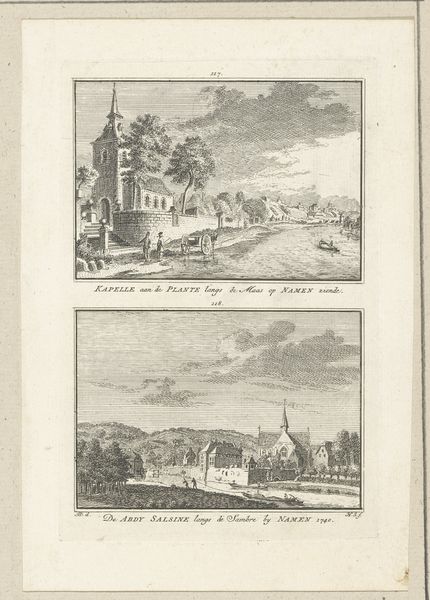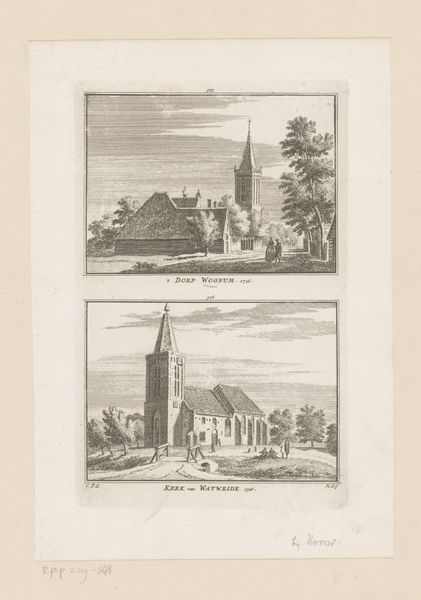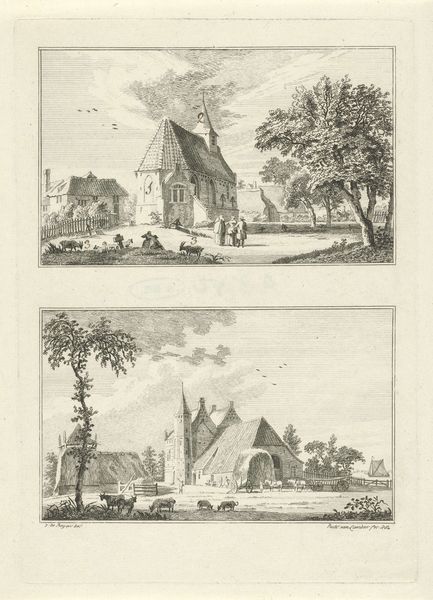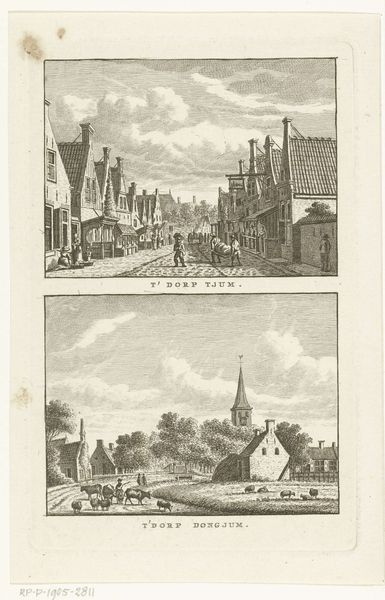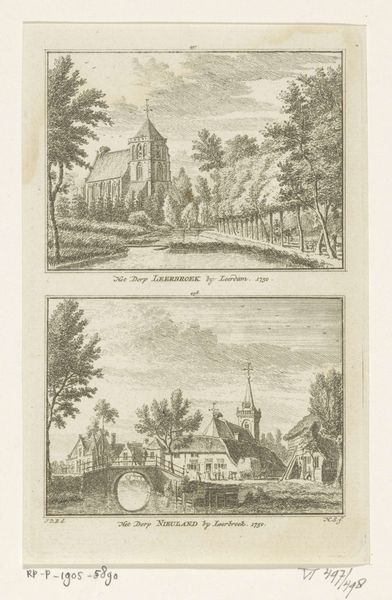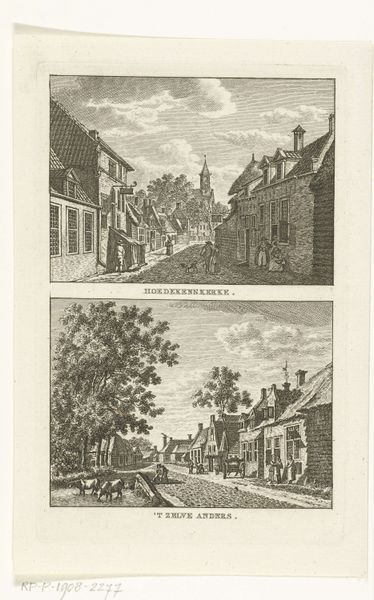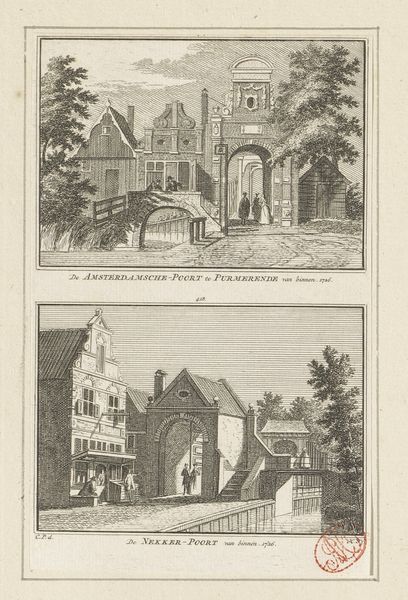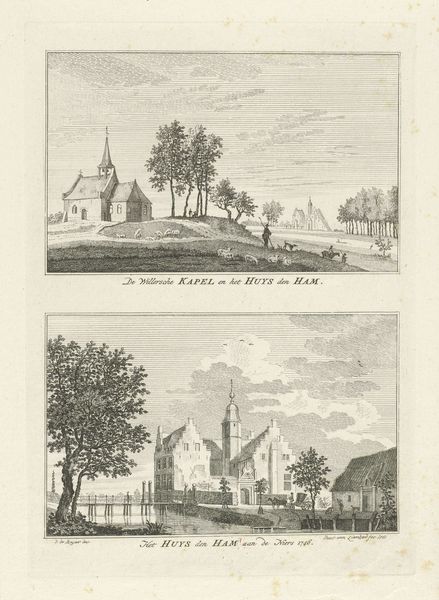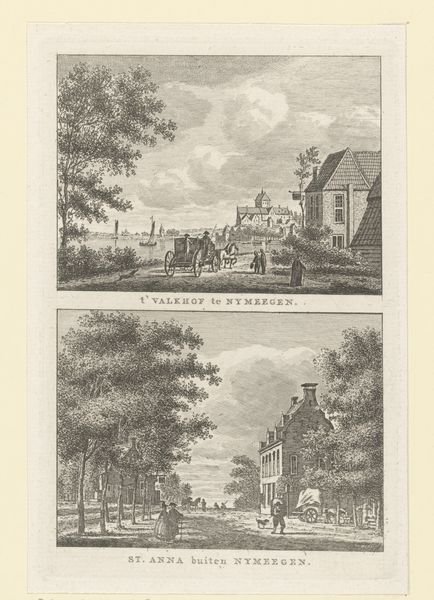
Gezichten op Ouderkerk aan de Amstel en Baambrugge 1761 - 1804
0:00
0:00
print, engraving
#
dutch-golden-age
# print
#
old engraving style
#
landscape
#
geometric
#
cityscape
#
engraving
Dimensions: height 423 mm, width 307 mm
Copyright: Rijks Museum: Open Domain
Editor: This print, titled "Gezichten op Ouderkerk aan de Amstel en Baambrugge," is an engraving that the Rijksmuseum dates from 1761 to 1804 and attributes to Erven de Weduwe Jacobus van Egmont. What I find most interesting is the division of the page. It's like seeing two different worlds, one above the other. What catches your eye in this piece? Curator: The organization is certainly crucial. Consider the symmetrical framing of each landscape. Each vista is a study in geometric composition. Note how the linear precision emphasizes architectural forms. Semiotically, the verticality of the church spires creates a powerful binary contrast to the horizontal planes of the waterways and roads. Editor: So you’re saying that even the seemingly simple placement of the buildings conveys meaning through this contrast? Curator: Precisely. Observe the engraving technique itself. The precise, clean lines construct a clear, rational perspective. What is represented here is not merely topography, but a structured ordering of space, reflecting Enlightenment ideals of clarity and control. Do you perceive a similar order within the negative space? Editor: I see what you mean. The sky, even with the clouds, seems intentionally balanced above each scene. It contributes to the sense of…organized tranquility, perhaps? Curator: Exactly. Furthermore, the absence of expressive, gestural marks forces us to confront the underlying structure. How does the print's materiality influence your understanding of the landscape depicted? Editor: Knowing it's an engraving makes me focus more on the precision. It adds to this sense of control, or maybe even a desire to present the landscape as orderly, whether it was or not. I hadn't really considered the implications of the printing process itself. Curator: A crucial insight. Analyzing such formal elements, stripped bare in monochrome, allows us to see the deeper structural framework shaping our experience of the work.
Comments
No comments
Be the first to comment and join the conversation on the ultimate creative platform.
